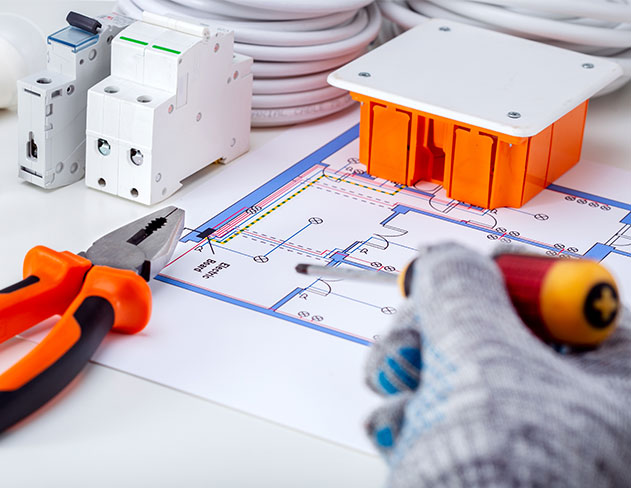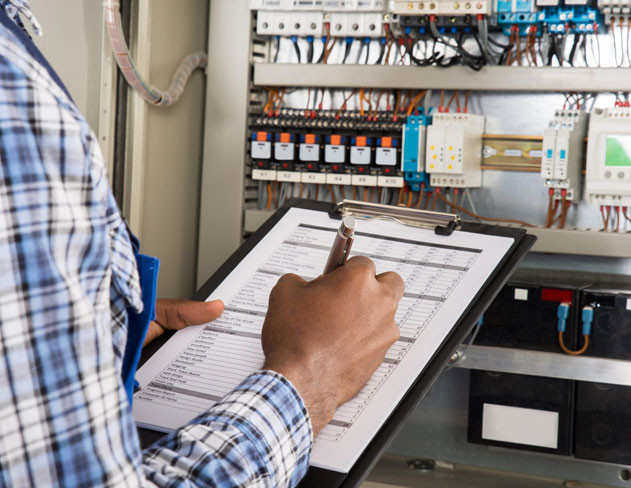A Guide to LED Lights for Commercial Buildings
The popularity of LED lighting replacement [link to the product page on LED Lighting Replacement] has skyrocketed in commercial environments thanks to the extensive range of benefits these energy-efficient lighting solutions provide for businesses and facilities.
Commercial LED lights can last over 50,000 hours, reducing the need for frequent replacement. Their technology enables precise directional lighting that illuminates commercial spaces efficiently. LEDs also support smart lighting features like occupancy sensors that automate lighting based on the presence or movement of people in industrial facilities.
Many proactive companies are rapidly switching their premises to modern LED lighting to save on expenditures. The long lifespan even allows councils to save on lifelong maintenance when installing LED street lighting. For most commercial property owners, upgrading ageing lighting is now a no-brainer when considering the long-term savings and sustainability benefits.
In this guide, we’ll cover all you need to know about LED commercial lighting.
Choosing the Right LED Lighting for Your Business
Factors to Consider
Key aspects to evaluate when choosing LED lighting include:
- Light Output: LED lighting is available in a wide range of light output levels to suit different commercial needs. Consider aspects like brightness, light colour, distribution, and glare when replacing outdated fittings.
- Energy Ratings: Pick commercial LED lights with the highest energy efficiency ratings to maximise savings on electricity bills. Quality LED lighting can save over 80% compared to halogen.
- IP Ratings: IP65 and IP66 ratings guarantee LED lights are dust-tight and protected from high-pressure water jets—perfect for industrial applications.
- Warranties: Opt for commercial LEDs with at least 5 years of manufacturer warranty for peace of mind. This ensures free replacements in case of unlikely issues.
- Lifespan: Premium commercial LEDs boast extreme 50,000+ hour lifespans, guaranteeing decades of near maintenance-free operation.
- Light Distribution: Match wide or narrow beam angles of LED panels, battens and bay lights to intended spaces for optimal illuminance.
- Smart Lighting: Connected LED lighting allows automation, monitoring, and lighting customisation through sensors and software.
Types of Commercial LED Lights
Various LED lighting types suit different commercial spaces:
- Panels: Offer general ambient lighting, available in recessed, surface mount, and suspended options—ideal for offices.
- Battens: Provide bright directional lighting perfect for retail shelves, workbenches, and mezzanine floors.
- Downlights: Recessed lights commonly used in offices, hotels, and retail for focused task lighting.
- High Bays: Powerful, wide-coverage LED high bays ideal for warehouses, factories, and gymnasiums.
- Flood Lights: Weatherproof outdoor LEDs designed for perimeter, area and road illumination.
Selecting for Specific Spaces
When upgrading commercial lighting, consider the unique needs of your environment:
- Warehouses: Instant-on LED high bays save energy and maintenance costs while improving safety.
- Manufacturing: Heavy-duty LED luminaires withstand dust, moisture and corrosion for long-lasting performance.
- Office Spaces: Panels enhance ambient lighting while downlights provide adjustable task lighting.
- Retail: Track lights and battens spotlight merchandise while CCT tuning showcases colours.
- Exterior: Flood lights secured by PIR sensors boost security while reducing energy.
Benefits of LED Lighting in Commercial Environments
Upgrading to commercial LED lighting offers immense benefits for companies [link to the piece “What Are The Benefits Of LED Lighting”] across operational efficiency, sustainability, safety and beyond.
Energy Efficiency and Cost Savings
By consuming over 80% less electricity than outdated lighting types, commercial LEDs dramatically cut energy bills. Their exceptional 50,000+ hour lifespan also practically eliminates expensive maintenance from frequent lamp replacements over decades. LED panels, downlights and other options also enable the use of fewer fixtures to achieve equal or higher illumination.
In most facilities, the energy and maintenance savings result in under 2 years of payback on the cost of upgrading. The cumulative savings from LED lighting provides great long-term value.
Light Quality and Environmental Impact
Tunable LED lighting allows optimising light colour, intensity and direction for different commercial spaces, improving visibility, merchandise appeal, safety and employee productivity.
LEDs also emit virtually no harmful UV or IR radiation that can damage sensitive objects in museums and galleries. Integrated sensors facilitate automating lighting based on external conditions and human presence to save energy.
The energy savings and absence of mercury support organisations in shrinking their carbon footprint and meeting sustainability targets through LED lighting. Facilities also gain the flexibility to control lighting remotely through integrated software platforms.
Durability and Maintenance
With a rugged structure resistant to vibrations and external impacts, LED luminaires have operated reliably for over a decade without requiring any maintenance. Their resilience to dust and moisture ingress even allows LEDs to thrive in challenging industrial environments.
By minimising lighting faults and the constant need for replacement, facilities can substantially reduce lifecycle labour and maintenance costs. Facility managers also gain peace of mind knowing commercial LEDs will consistently deliver bright, uniform illumination year after year without surprises.
Cost Analysis and Savings
Initial Investment vs. Long-Term Benefits
While quality commercial LED lighting fixtures often have a higher upfront cost compared to conventional options, their energy efficiency and low maintenance requirements deliver substantial savings year after year during the lifespan of LED products.
Most organisations recover their initial LED lighting investment in less than 2 years. After this payback period, the savings directly enhance profitability and operational efficiency. Upgrading legacy lighting, therefore, guarantees excellent value.
Operational Costs and Carbon Footprint
Research by the Department for Business, Energy & Industrial Strategy suggests upgrading traditional lighting to LEDs reduces associated carbon emissions by 50-70%. Organisations also shrink their environmental footprint by lowering electricity consumption.
The dramatically extended lifespan and resilience of LED luminaires further minimizes overall waste from shorter-lived conventional lighting ending up in landfills. Their reduced energy use for equal light levels also lowers air pollution by causing fewer emissions at power stations.
Installation, Maintenance, and Replacement of LED Lighting
Installation Process
Professional installation is recommended to securely configure lighting layouts that maximise coverage while meeting regional safety and efficiency regulations. Experts can also advise on the most suitable luminaires based on the physical space, interior design, employee tasks, shelving configurations, and other considerations.
Improper installations can be unsafe or illegal. Faulty lighting layouts also waste energy, create shadows or glare that reduce productivity, and damage the company’s reputation.
Maintenance of LED Lighting
Though extremely durable, LED fixtures should be visually inspected once a year and have electrical connections checked for damage or loose contacts to prevent potential hazards. Failing to spot minor issues early can mean discovering more serious problems like circuit failures too late.
Dust build-up on the LED circuit board can also cause overheating and reduced efficiency. Proactively cleaning fixtures prevents such issues.
LED Light Replacement and Fitting
Commercial LED lights can reliably operate for over a decade. But once LEDs approach the end of functional life after 50,000+ hours, upgrading to benefit from further efficiency gains is recommended.
For smooth lighting transitions, electrical contractors like Hexo Electrical Testing offer full-service LED replacement solutions spanning disposal of equipment in line with UK environmental regulations to optimised installation of modern LED luminaires.
Specific Applications of Commercial LED Lighting
Modern LED lighting delivers value across diverse commercial environments spanning offices, retail stores, warehouses, manufacturing facilities and more.
Offices – Panels, downlights, and batten luminaires provide energy-efficient ambient and task lighting to improve visibility and comfort in workplace environments. Connected LEDs also facilitate zonal lighting automation based on usage.
Warehouses – Instant-on LED high bays significantly reduce energy consumption in storage facilities while providing essential safety illumination for vehicle and foot traffic over large areas.
Manufacturing – Vibration and corrosion-resistant luminaires with high ingress protection thrive in tough industrial environments to provide reliable, low-maintenance lighting.
Retail – High CRI (Colour Rendering Index) spotlights and downlights boost merchandise appeal and colours, while integrated sensors facilitate automated on/off control to conserve energy.
Exterior – Smart LED flood lights with integrated occupancy and daylight sensors provide area illumination while minimising energy wastage and light pollution.
What Are LED Lights?
LED stands for Light Emitting Diode. Inside LED luminaires, electricity passes through a semiconductor material, emitting visible light. Multiple small LEDs are grouped to deliver bright, uniform, and energy-efficient illumination.
Compared to outdated lighting, LEDs transform energy to light far more efficiently while lasting much longer – leading to massive energy and maintenance savings. Modern manufacturing also packs more LEDs in compact spaces to emit more light with less energy.
For most commercial facilities, the proven performance, reliability, cost savings and intelligent lighting control unlocked by LEDs make them the best illumination infrastructure available today.
Legal and Safety Considerations in Industrial LED Lighting
While LED lighting offers immense advantages, commercial property owners must ensure deployments meet fire safety, construction, electrical and environmental regulations in the UK.
Overview of UK Regulations and Standards
All wired-in electrical fixtures like lighting must comply with UK safety regulations, chiefly the basic BS 7671 wiring guidelines and the Electrical Equipment (Safety) Regulations. Installations should be inspected and certified by qualified electricians.
Fire protection standards like BS 5266 dictate appropriate emergency lighting based on building size and purpose. BS EN 1838 also covers safety sign illumination for clear visibility.
The Waste Electrical and Electronic Equipment (WEEE) and Restriction of Hazardous Substances (RoHS) regulations also mandate eco-friendly construction, disposal and recycling obligations.
Compliance and Certification
Quality commercial LED lighting carries safety certifications like ENEC, CE and UKCA markings along with performance marks like the BSI Kitemark to signify compliance with British and European product standards.
Such independent testing evaluations validate electrical, fire and construction safety while reassuring longevity and efficiency claims.
Ensuring Workplace Safety
Beyond meeting regulations, facilities must ensure LED lighting maintains sufficient brightness with glare control to provide visual comfort and prevent workplace hazards. Smart LED systems with sensors also boost safety by adjusting based on occupancy and environmental conditions.
With compliance, built-in sensors and customizability, modern commercial LED lighting enhances rather than compromises workplace safety when properly deployed.
How Hexo Electrical Testing Can Help
Hexo Electrical Testing offers full-service LED replacement and fitting solutions tailored for diverse commercial environments like offices, warehouses, retail stores, and manufacturing facilities.
Our experts conduct audits of existing lighting infrastructure across commercial premises and provide cost-benefit analyses for transitioning to modern, energy-efficient LED technology.
For clients ready to upgrade, Hexo Electrical Testing handles the installation of the latest LED luminaires to replace outdated lighting. The team manages the entire LED replacement process seamlessly from start to finish.
To request a quote or learn more about fitting your commercial property with new LED lighting to enhance savings, safety and sustainability, contact Hexo Electrical Testing today.
FAQs
How long do commercial LED lights last?
Quality commercial LED lighting lasts over 50,000 hours on average – providing reliable illumination for a decade or longer before needing replacement. This is 2-5 times longer than conventional lighting.
Do LED lights flicker when burning out?
No, LEDs do not flicker as they approach the end of life. Light output slowly declines over years of use instead. Integrated drivers help maintain consistent illumination levels for most LED lifespans, too.
When should you not use LED bulbs?
LED bulbs may not suit applications needing extremely focused beams since LEDs emit light across a larger surface area. Their light spectrum also does not always match what certain goods require for an ideal display. Proper fixture design can compensate.
Do LED shop lights use a lot of electricity?
Not at all. Quality LED shop lights consume 60-80% less electricity than outdated fluorescent and HID options. They save substantially on energy bills thanks to exceptional efficiency.

